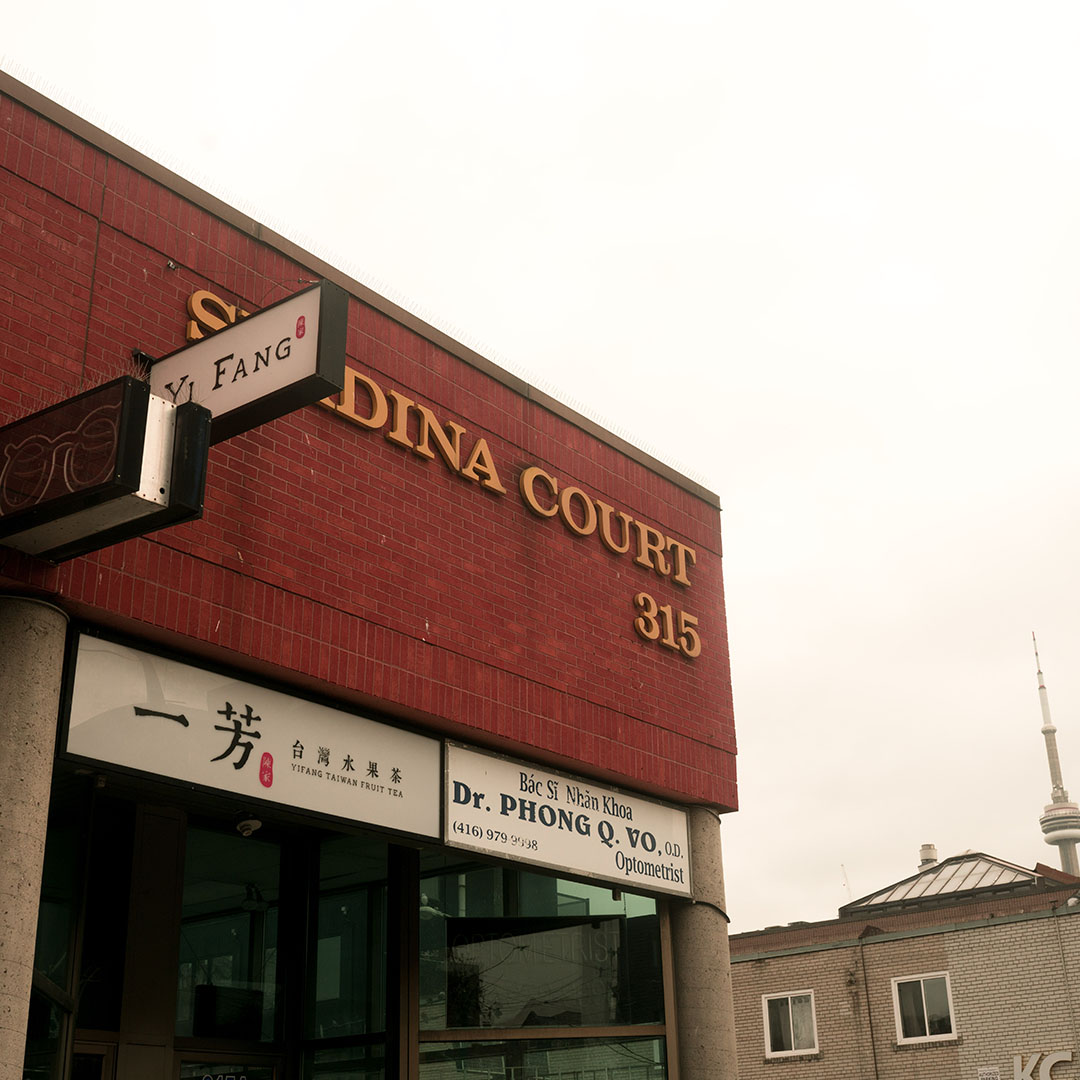When I moved to Toronto two years ago to attend U of T, I used to trek half an hour south of campus to get groceries and baked goods in Chinatown. After filling a basket with vegetables and noodles at Hua Sheng Supermarket, I’d head a few doors north to Ding Dong Pastries & Cafe, where pineapple buns, egg tarts, raisin twists, and more awaited.
Ding Dong used the same plastic trays and tongs as the bakeries in the Chinese-dominated suburb of Vancouver where I grew up, and the pineapple buns tasted so familiar. I’d eat two or three, fingers stinging in the cold, on the way back to my Innis College dorm room.
Visits to Ding Dong were an inexpensive way to soothe the homesickness I felt that first winter in a brand new city. “No matter what you put on the tray,” one Yelp reviewer wrote in 2009, “the bill is never over $4.00.” The last time I went to Ding Dong, that still felt true.
Recently, I was saddened to discover that, despite Ding Dong’s long-standing popularity, the bakery may not have a promising future. In August 2019, BlogTO’s Tanya Mok broke the news that the two buildings at 315–325 Spadina Avenue, where Ding Dong is located, are the subject of a redevelopment proposal, filed on July 25, 2019, on the City of Toronto’s publicly-accessible Application Information Centre.
Most attention for the redevelopment has focused primarily on Ding Dong’s neighbour, a well-loved dim sum institution in a building that dates back to the 1920s. “Chinatown staple Rol San may be closing due to development proposal,” the headline in the Toronto Star’s coverage read.
“People are really rallying around the idea of Rol San specifically,” Mok said in a BlogTO podcast episode, “just because it’s probably the most recognizable business.”
Some community members, like Tonny Louie, who chairs the Chinatown Business Improvement Area, see the redevelopment as an opportunity to welcome new people and investments to Chinatown. But others are raising alarms that it will displace the neighbourhood’s working-class residents, as well as the immigrant-run small businesses it will redevelop.
The proposal, then, is about a lot more than dim sum and pineapple buns. It plays into recent trends of gentrification in Chinatowns across North America, making them increasingly unaffordable for the people who rely upon and love those communities most.
The changes being made
The City of Toronto has yet to issue a decision on the proposed redevelopment, but if the proposal is approved in its original form, the northeast corner of Spadina Avenue and D’Arcy Street will be effectively unrecognizable in a few years.
Apart from Rol San and Ding Dong, 11 other small businesses — among them a jeweller, a gundam store, and an optometrist’s office — currently occupy the two single-storey buildings on that corner. The development application envisions both buildings torn down and replaced with a 13-storey brick and glass tower.
The proposed tower would be designed by Montgomery Sisam Architects, the same firm responsible for U of T’s Myhal Centre and Exam Centre. Plans show that the building’s ground level will retain some space for shops and services, and above, 239 new apartment units, mostly double studios, will enter the rental market.
The proposal has been causing friction from its first announcement. The notice posted about the proposed redevelopment was in English — a language inaccessible to many of the neighbourhood’s residents, who speak Chinese or Vietnamese.
Those residents, among them local seniors and newly arrived immigrants, could have been blindsided by the change in their community if a new community collective didn’t intervene.
In response to the sign’s inaccessibility and the threat posed by the redevelopment, a group of artists working out of Tea Base, a Chinatown community space, came together. Friends of Chinatown Toronto (FOCT) was born. Mok, an organizer for FOCT, expressed that the group really likes its name “because we can say that we’re FOCT. We’re getting fucked, basically.”
In the year since the group was founded, it has become one of the foremost forces demanding that the developers account for the Chinatown community’s interests — and working to ensure that the community is included in decisions about its future.
Several steps down from the notice, FOCT posted a parody notice translating the development’s details into Chinese and advocating for accessibility and affordability. CBC’s Ali Chiasson called the move “an example of conscious outreach” that wasn’t “anti-development,” but rather “pro-communication.”
One notable omission from the original sign — which the parody remedied — was the time and date of the proposal’s first community consultation. On the evening of November 19, 2019, friends and members of the Chinatown community met with the city and developers in a cramped U of T Medical Sciences classroom. FOCT had to initiate a request for translators.
Arthur Pham, the optometrist at Saigon Optical, recalled the first meeting as messy and lacking transparency. Saigon Optical, which is located at 315 Spadina Avenue, is one of the businesses facing displacement as a result of the redevelopment.
He noted that the floor plans at that first meeting did not seem to have allocated sufficient space for all the businesses at the affected addresses. Saigon has been flourishing at its current location for around 30 years, said Pham, who called the prospect of being pushed out “a little bit disheartening.”
Shortly after the meeting, the city posted its first-ever non-English language development sign, in simplified and traditional Chinese. In the months since, FOCT and community groups like the Friends of Kensington Market have continued to participate in consultations through a city-run working group.
However, FOCT’s public updates, which are posted to its social media accounts as well as a TinyLetter newsletter, indicate that the discussions have yet to generate a satisfactory resolution for all parties.

